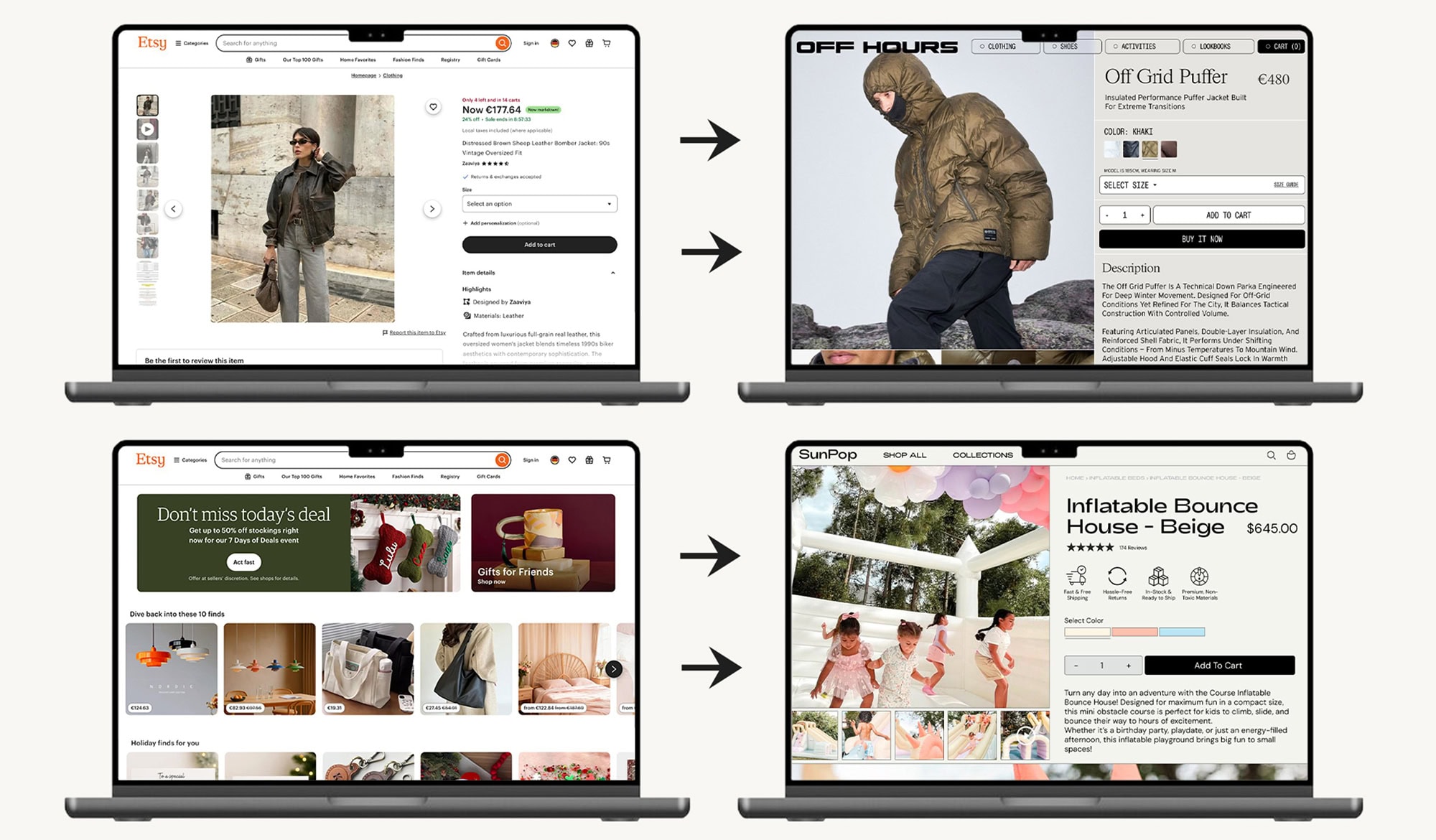How to Build a Modern Customer Avatar (2025 Edition) for Your eCommerce Brand
The old way of creating customer avatars feels… outdated.
You know the one:
“Meet John, 34, works in IT, drinks cold brew, and likes mountain biking.”
It’s cute, but it doesn’t tell you why John buys, how he decides, or what really motivates him.
In today’s fast-changing digital world, eCommerce brands need something deeper — a system that’s driven by real data, human psychology, and cultural insight.
This post walks you step-by-step through building your Modern Customer Avatar — one that helps you connect with your customers on a real, emotional level and make smarter marketing decisions.
Step 1: Forget Demographics — Focus on Motivations
In 2025, demographics tell you very little.
Two customers of completely different ages might buy your product for the same emotional reason.
Instead of asking:
“How old are they?” or “What’s their job?”
Ask:
“What do they really want to achieve or feel?”
Prompts:
- What outcome do they dream of? (e.g., “feel confident in their style,” “spend less time cooking”)
- What emotion are they chasing? (e.g., relief, excitement, pride, belonging)
- What do they hope your product will change in their life?
Example:
Instead of “Sarah, 28, marketer in LA,”
think:
“A driven, self-improvement-oriented customer who craves simplicity and wants tools that help them feel more in control of their day.”
This shift gives you marketing language that resonates, not just describes.
Step 2: Identify Real Pain Points and Frustrations
People buy solutions to pain.
Your job is to articulate that pain better than anyone else.
Prompts:
- What’s the biggest frustration or barrier they face daily?
- What do they complain about in reviews or forums?
- What tasks, routines, or purchases make them say “There has to be a better way”?
- What emotions (overwhelm, confusion, guilt, regret) are attached to those frustrations?
Example:
“They hate wasting money on skincare products that don’t deliver. They’ve been burned by overhyped brands, so they crave transparency and results.”
Now your marketing copy can speak to that directly:
“No false promises. Just results backed by real dermatologists.”
Step 3: Map Their Decision Triggers
This is where your marketing gets strategic.
Instead of guessing when someone’s ready to buy — identify the exact moments that push them to act.
Prompts:
- What life or emotional events precede a purchase? (e.g., “moved to a new apartment,” “started working remotely,” “felt stuck with their current routine”)
- What are the micro-moments of awareness? (“Saw a TikTok about it,” “friend recommended it,” “read a bad review about a competitor”)
- What makes them finally say “I’m done — I’m trying something new”?
Example:
“Our customer tends to buy new home decor after moving, renovating, or following a home makeover creator on Instagram.”
Use these triggers in your ad timing, remarketing, and email flows.
Step 4: Discover Where They Spend Time and Whom They Trust
Attention is fragmented — your customers don’t just “hang out on Instagram” anymore.
They belong to micro-communities and trust specific creators, not brands.
Prompts:
- Which creators, communities, or publications influence their choices?
- What platforms do they engage with most (Reddit, TikTok, Discord, Pinterest, etc.)?
- What kind of content do they consume — tutorials, reviews, memes, long-form essays?
- Who do they listen to when deciding what to buy?
Example:
“Our eco-conscious audience spends time on Reddit’s r/ZeroWaste, follows sustainability influencers on YouTube, and loves practical, no-fluff TikTok tips.”
Now you know where to advertise and how to shape your tone of voice.
Step 5: Analyze Their Language and Beliefs
The words your customers use reveal how they see themselves — and how you should speak to them.
Your goal is to mirror their tone and mindset, not impose your own.
Prompts:
- How do they describe their challenges or goals?
- Do they use emotional words (“frustrated,” “tired”) or rational ones (“inefficient,” “expensive”)?
- What values do they emphasize — sustainability, convenience, quality, or aesthetics?
- What identity do they project — minimalist, expert, trendsetter, rebel?
Example:
“They don’t want to ‘go green’ — they want products that make sustainability effortless.”
That insight changes your entire positioning.
Step 6: Gather Real-World Insights
Skip the guesswork. Start listening.
Here’s how to collect real customer data fast:
- Amazon or G2 Reviews → mine for emotional phrases (“I love how simple it is” / “waste of money”).
- Reddit & Discord → find organic discussions in your niche.
- Customer Support Tickets → goldmine for objections and feature requests.
- Exit-Intent Surveys → ask: “What almost stopped you from buying?”
- Social Listening → track comments and tags mentioning your brand or competitors.
The more authentic language you capture, the more precise your avatar becomes.
Step 7: Build Your Modern Avatar Profile
Now, bring it all together with this simple fill-in framework 👇
“Our ideal customer segment, [Segment Name], is driven by [Core Desire] and struggles with [Primary Frustration].
They’re influenced by [Creator/Community/Trend] and respond best to messages that emphasize [Key Value or Belief].
Their buying decision is usually triggered by [Specific Event or Realization].”
Example:
“Our ideal customer segment, The Conscious Minimalists, is driven by a desire to live with less but better and struggles with clutter and decision fatigue.
They’re influenced by YouTube creators like Matt D’Avella and Reddit’s r/simpleliving, and respond best to messages about simplicity, intention, and calm design.
Their buying decision is triggered when they feel overwhelmed by mess or waste in their home.”
This gives you messaging clarity, targeting accuracy, and creative direction — all in one snapshot.
By the end of your workflow, these are the 10 Things You Must Have Documented In Your Avatar Profile:
- The crappy 'Before State' To Escape
- What is their 'Dream Outcome'
- Top 5 Buying Decisions
- What Stage Of Awareness
- What Have They Tried Before
- Top 5 Pain Points
- Top 5 Goals
- Top 5 Questions Of The Niche
- Top 5 Roadblocks & Objections
- Top Stats, Facts & Figures Of The Niche
This approach allows us to get extremely clear on the WHO:
- Who will see our ads
- Who will see our offer
- Who will see our landing page
- Who will actually buy
Step 8: Keep It Alive — Update Quarterly
Your customer avatar isn’t a one-time exercise.
Culture, technology, and preferences evolve — and so should your understanding of your customer.
Set a reminder every quarter to:
- Revisit reviews and community chatter.
- Check analytics for new behavior patterns.
- Talk to your support or sales team about new objections or feedback.
Think of it as maintaining a living, breathing “customer intelligence system.”
Final Thoughts
The modern customer avatar isn’t a fictional character — it’s a data-informed psychological portrait of the people you serve.
When you know why your customers buy, what triggers their action, and how they see themselves, every piece of marketing — from your ads to your emails to your packaging — becomes more resonant and effective.
So drop the “John, 34, IT guy” sheet.
Build something that lives, breathes, and evolves with your brand.







.jpg)

